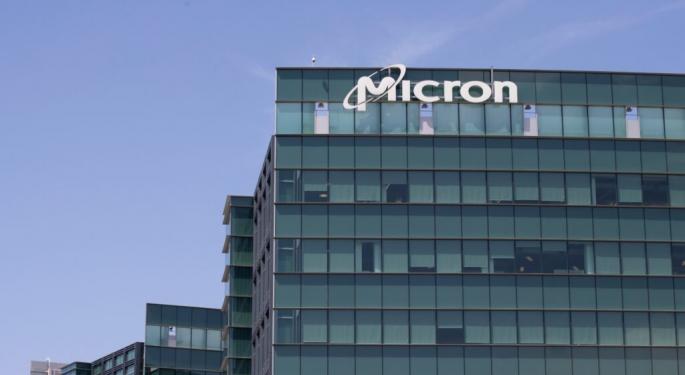Micron Launches First Space-Ready Memory Chip To Power AI Missions In Orbit
Micron Technology (NASDAQ:MU) announced on Tuesday that it has launched a high-density, radiation-tolerant SLC NAND chip, marking its first space-qualified memory product and expanding its footprint in the booming space economy.
This 256-gigabit die—engineered for harsh orbital conditions—is now available and positions Micron as the first major memory manufacturer to offer such a solution.
Driven by rising demand for AI-enabled edge computing in orbit, Micron targets next-gen aerospace missions with technology enabling autonomous data processing aboard spacecraft.
Also Read: Micron Stock Soars 42% In 2025, But CEO Warns Of Demand Pull-Ins
Its new NAND chip supports AI use cases like anomaly detection and real-time decision-making without relying on Earth-based infrastructure.
Micron put the chip through rigorous testing that was aligned with NASA and military standards for radiation exposure, temperature extremes, shock, and vacuum pressure to ensure reliability. These include total ionizing dose (TID) and single event effects (SEE) characterizations, ensuring mission-critical durability.
While this marks Micron’s first officially space-qualified product, its memory is already in orbit powering NASA’s EMIT instrument aboard the International Space Station. In Mercury Systems’ solid-state data recorders, Micron’s flash memory has supported the capture of massive spectral datasets used in Earth and climate science.
As the only U.S.-based memory manufacturer, Micron offers complete supply chain control, a critical advantage for aerospace and defense clients.
The company is also investing in its Manassas, Virginia, facility to expand production of NOR, SLC NAND, and long-lifecycle DRAM products. Plans are underway to launch additional space-grade memory solutions tailored for evolving AI and data demands in orbit.
By combining ruggedized, high-performance memory with end-to-end supply assurance, Micron is positioning itself as a vital enabler of space-based computing and next-generation aerospace infrastructure.
Micron stock gained 35% year-to-date, topping the Nasdaq Composite Index’s 9%. The stock surged over 61% in the last three months, topping the index’s 29%.
Analysts see strong AI demand, improved DRAM pricing, and an expanding High Bandwidth Memory (HBM) portfolio as key growth drivers for Micron. The company raised guidance sharply, with fourth-quarter sales projected at $10.7 billion and EPS at $2.50, fueled by margin gains and a healthier product mix.
However, muted PC and smartphone demand continues to pressure NAND prices, and analysts remain cautious. Bank of America’s Vivek Arya maintained a Neutral rating, citing persistent startup cost headwinds and limited margin visibility beyond 2025 despite upbeat earnings and long-term AI tailwinds.
Price Action: MU stock is trading lower by 3.72% to $109.72 at last check Tuesday.
Read Next:
Photo via Shutterstock
© 2025 Benzinga.com. Benzinga does not provide investment advice. All rights reserved.
Posted-In: why it's movingNews Movers Tech



